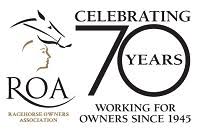Fee Hikes and Plush Offices: The BHA’s Race to Spend While Owners Foot the Bill
As one exasperated owner put it: “Why do I have to pay so much when I have to do all the input?”
Ed Grimshaw
12/21/20244 min read


The British Horseracing Authority (BHA), the organisation tasked with keeping the sport “safe, clean, and fair,” has a curious way of demonstrating fiscal responsibility. While it asks owners to cough up another 3.9% (4% really) in fees come 2025—on top of a decade of near-relentless hikes—it remains firmly ensconced in the plush surroundings of Holborn Gate, in the heart of London’s priciest postcodes. Cost-cutting, it seems, is for others. Relocating to Birmingham, Manchester, or even somewhere with affordable parking? Not on the table. Why leave the Holborn bubble when there are owners to squeeze?
Where Does the Money Go?
The BHA insists that these fee increases are necessary to ensure the sport remains “safe, clean, and fair.” But what’s glaringly absent is a transparent breakdown of how these funds are spent. Owners, who account for a significant chunk of the BHA’s £40M turnover, are beginning to ask hard questions about where their money goes—especially since much of the input work for the new Racing Digital system falls to them.
As one exasperated owner put it: “Why do I have to pay so much when I have to do all the input?” It’s a fair question, especially given that the average salary within the BHA is reportedly close to £50,000, with wages accounting for more than half of the organisation’s costs.
While owners juggle the rising costs of racehorse upkeep, entry fees, and stagnating prize money, they’re also effectively funding an organisation whose staff enjoy wages significantly above the national average. Is it any wonder there’s frustration brewing?
The Perennial Delay of Racing Digital
Then there’s the Racing Digital project, the BHA’s high-tech unicorn. Originally slated for completion by July 2024, the project is now expected to limp over the line in November—if we’re lucky. It began in July 2021 as a £40M initiative to streamline racing’s clunky administrative processes, but delays have already created “short-term funding requirements.” Translation: it’s over-budget and late.
Even the BHA admits that its staff are likely to be “impacted” by the rollout, with teams diverted from their usual responsibilities to plug the gaps. The result? Disruption to normal operations and another round of headaches for owners and trainers.
One wonders if this multi-million-pound platform will genuinely deliver the efficiencies it promises—or if it’s destined to become yet another shiny, expensive piece of racing bureaucracy. Owners have every right to be sceptical, especially since the project will rely on their input to function, despite them receiving little in return.
Plush Offices, Slim Profits
And yet, while Racing Digital stumbles, the BHA remains steadfastly anchored in Holborn Gate, an office block synonymous with steep rents and legal chic. Why hasn’t the organisation considered moving to a more cost-effective location? A regional base in Birmingham or Manchester would not only slash expenses but also bring the governing body closer to the sport’s heartlands. Instead, the BHA clings to its London address, a choice that undercuts its claims of financial prudence.
The organisation’s financials paint a troubling picture. Turning over £40M annually, it ekes out a profit of just £2M—which suggest it could have held its pricing at current levels. Meanwhile, Chief Executive Julie Harrington’s salary jumped to £370,000 in 2023, up from £327,000 the previous year. That’s a 13% raise—far above the average increase most owners have seen in their prize-money returns, which frequently fail to cover costs. Does this smell of a board thats on top of its agenda and defending stakeholder interests?
If loyalty to racing is a two-way street, the BHA seems to be cruising down a one-way road of plush perks and bloated paychecks and using racehorse owners to fund an inefficient organisation.
The Owners’ Burden
Owners are, quite literally, the backbone of British horseracing. They fund the sport at every level, from paying for horse training and upkeep to shouldering race entry fees. Yet, as ROA Chief Executive Louise Norman points out, their loyalty is being stretched to breaking point.
Norman has criticised the fee increases, noting that they appear to prop up “legacy fee structures” rather than reflecting meaningful change. Her frustration is shared by owners across the industry, many of whom feel they’re being asked to fund inefficiency rather than progress.
It’s a bitter pill to swallow. Owners already know that horseracing is an expensive passion, but they expect something in return—a sense that their contributions are valued and wisely used. Instead, they’re met with rising costs, delayed projects, and hollow promises of better days ahead.
A Need for Accountability
If the BHA wants to maintain its credibility, it needs to do more than hike fees and issue vague reassurances. That starts with transparency: a clear, detailed breakdown of where the money goes, how Racing Digital is progressing, and what steps are being taken to improve efficiency.
It also means revisiting the basics of fiscal responsibility. Moving out of London, capping executive pay, and ensuring that owners see tangible benefits for their investment would be a start.
British horseracing has endured for centuries, surviving wars, recessions, and pandemics. But its future depends on more than just tradition. It requires a governing body willing to prioritise the needs of the people who keep the sport alive. Until then, owners will continue to ask why they’re being asked to pay ever more for an increasingly unsatisfactory return.
As for the BHA? It seems content to watch from its Holborn tower, offering little more than gratitude and fee hikes while the industry it governs struggles to stay afloat.
